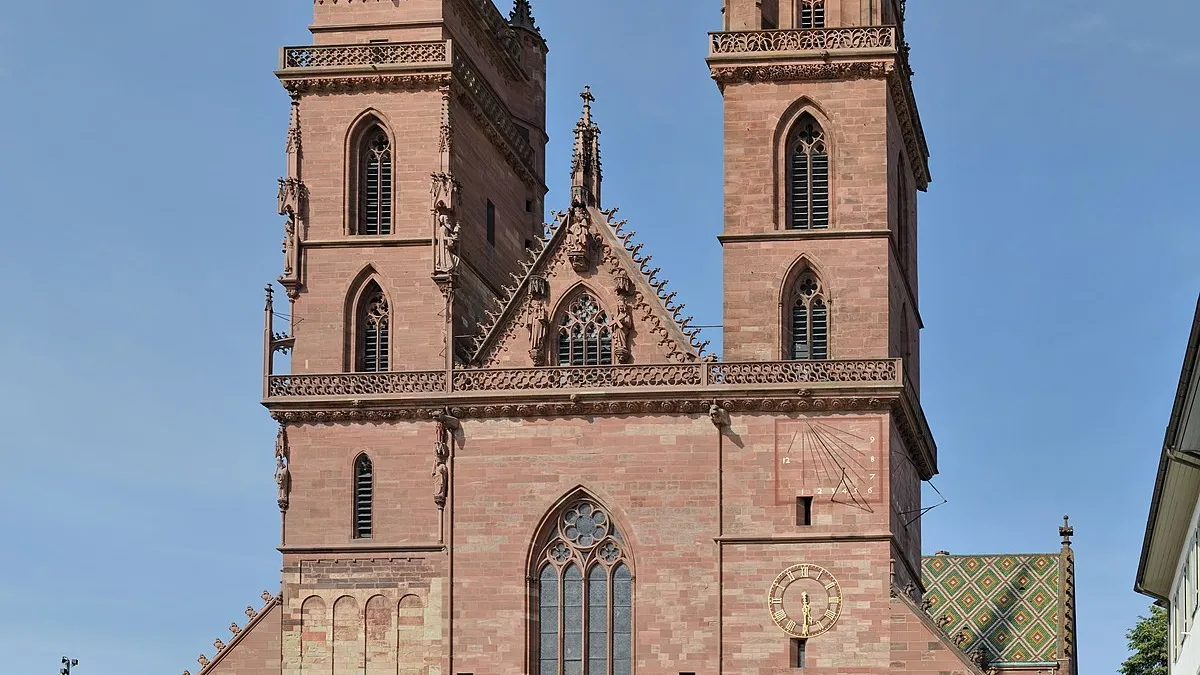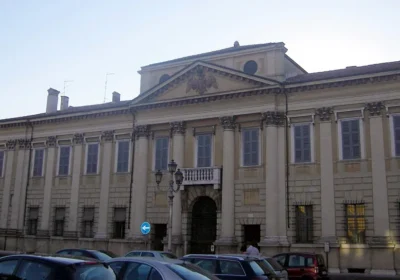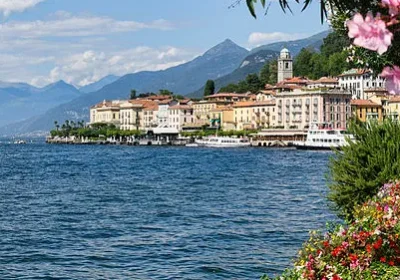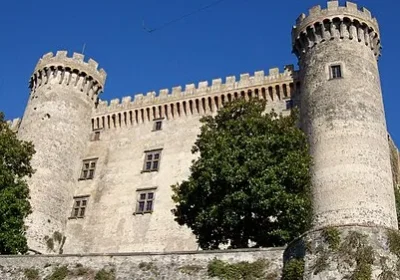Basel (German: Basel, French: Bâle, Italian: Basilea, Latin: Basilia, 260 metres above sea level, c. 170,000 inhabitants). 170,000 inhabitants)
Basel is one of the three largest cities in Switzerland and is the administrative centre of the Basel-Stadt semicanton
The city is located on the northern border of the country on the Rhine River, bordering Germany and France, and serves as a centre for the pharmaceutical and chemical industries. It is home to the oldest university in Switzerland, founded in 1460.
DESCRIPTIONS
Cathedral (German: Basler Münster) is the city’s main attraction. The monastery dates back to the 11th century and has been rebuilt since then, and is now a remarkable combination of Gothic exterior and Romanesque interior.
Strasburg Memorial (German Strassburger Denkmal) is a memorial to the Franco-Prussian War (1870-1871). The monument was created in 1895 by sculptor Frédéric Auguste Bartholdi, after which it was presented to Switzerland by Baron Hervé de Gruyère as a token of gratitude for Swiss aid to the people of Strasbourg during the fierce fighting for the city.
Basel Rathaus (German: Basler Rathaus). The Basel Town Hall was built of red sandstone in the late Gothic style in 1507-1513 years on the Market Square. A left wing was added to the building in the 17th century, and a tower was built between 1898 and 1904.
Spalentor (German: Spalentor) is the former gateway to the city of Basel. It is one of the three city gates that have survived in Basel. It is considered the most beautiful gate in Switzerland.
The Monastery of St. Alban (German Kloster St. Alban) is the first monastery in Basel. The monastery was founded in 1083 by the Benedictine order. The church at the monastery arose somewhat later, at the turn of the 12th century. Although the earliest buildings on this site date back to the 8th-9th centuries.
The Church of St Martin (German Martinskirche) – located on the banks of the Rhine and is the oldest parish church in Basel. The first mention of it dates back to 1100.
The Church of St Peter (German Peterskirche). The church is richly decorated with cycles of paintings and wall paintings. In the south side aisle are the most valuable works: “Position in the Coffin” (c. 1380) and “Annunciation of Mary” (c. 1400).
MUSEUM
Puppenhausmuseum (German Puppenhausmuseum), the largest museum of its kind in Europe. The museum was established in 1998. On 4 floors and an area of 1000 m², more than 6000 exhibits are displayed, including the famous Teddy bears, dolls, toy shops and miniature dolls’ houses.
The Basel Monastery Treasury (German Basler Münsterschatz). The treasures of the Basel monastery have been kept here for over 500 years.
The Basel Museum of Ethnology (German Museum der Kulturen) is the largest ethnological museum in Switzerland. It was established in 1849 on the site of an Augustinian monastery. The collection includes exhibits from Europe, ancient Egypt, Africa, Asia, ancient America and Oceania, including more than 10 metres of the Abelam house of worship from Papua New Guinea.
Art Gallery (German Kunsthalle). Basel Museum of Art, featuring contemporary avant-garde art.
Schweizerisches Feuerwehrmuseum (Schweizerisches Feuerwehrmuseum). The museum tells the history of firefighting from the Middle Ages to modern methods.
Pharmazie-Historisches Museum der Universität Basel (German Pharmazie-Historisches Museum der Universität Basel). The museum houses one of the world’s largest pharmaceutical collections, containing apothecary utensils, alchemical laboratories, mortars, travelling kits, books and medicines from the past.

















